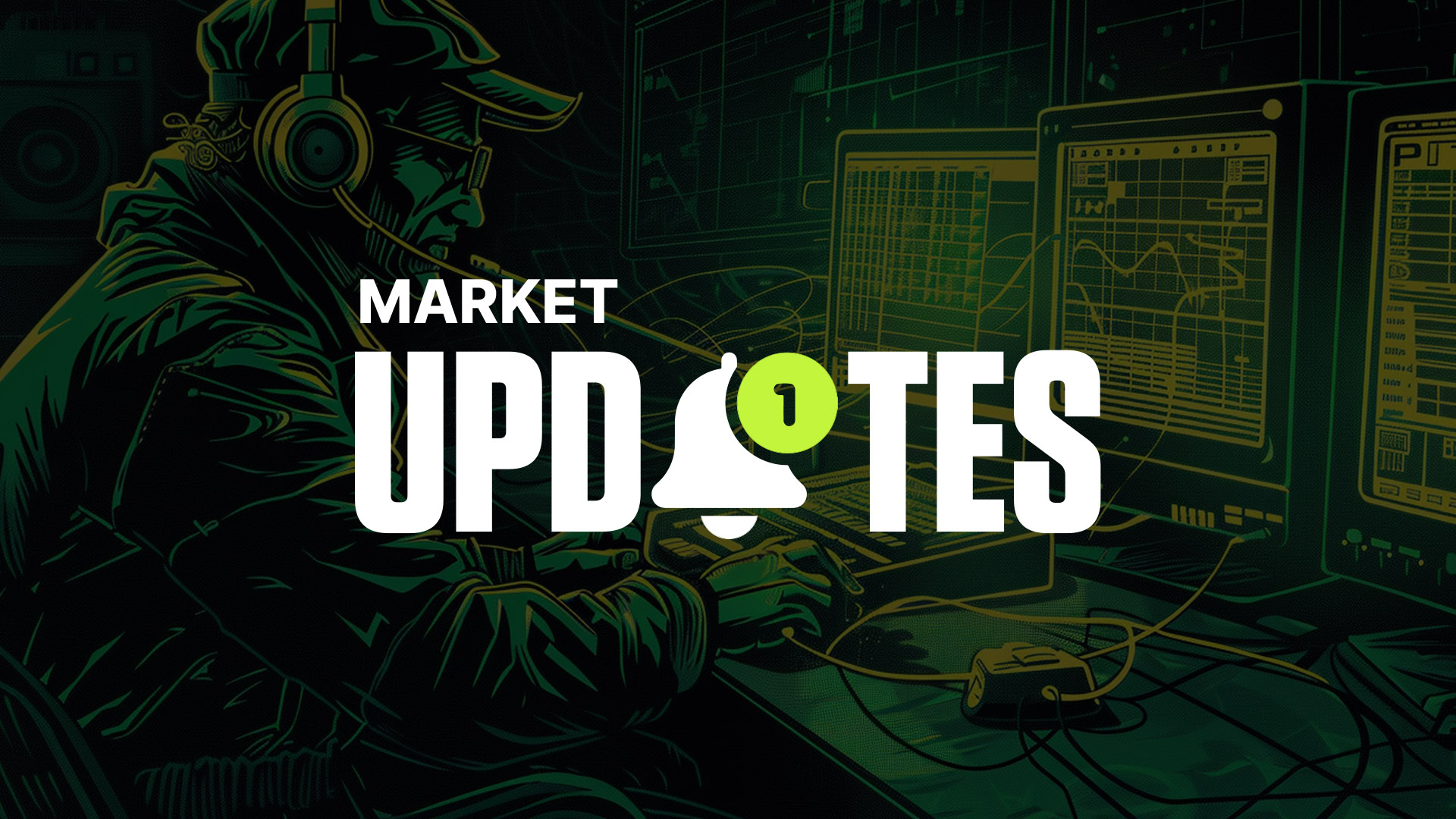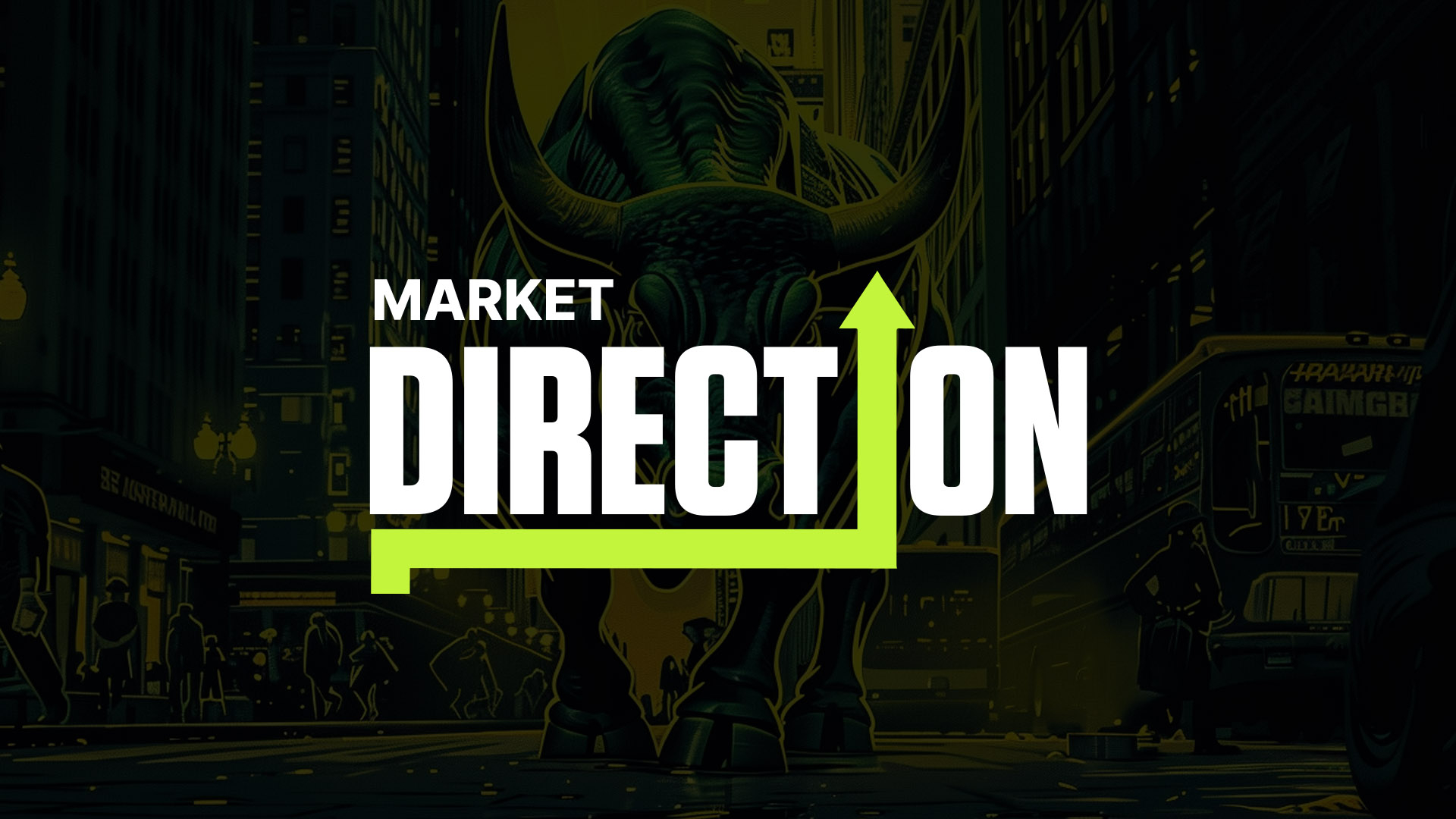Tutorial: Parallel Finance (swapping, providing liquidity and staking)
Parallel Finance is a decentralised money market protocol that allows users to stake, swap, lend, borrow and take part in crowdloans within the Polkadot ecosystem. Similar to how DOT is the native token of Polkadot, PARA is Parallel’s native token.

This tutorial will go through how to swap, provide liquidity and stake on the platform. Check out our other tutorial for a guide on how to use Parallel's money markets.
Tutorial
Getting set up
Head to https://parallel.fi and click ‘enter app.’The first thing you’ll need to do is connect a wallet. Polkadot.js and Parallel’s native wallet are the two wallets currently supported by the protocol, but as you can see, support for other wallets is coming soon.
Click here for a quick guide on how to set up a Polakdot.js wallet and here for how to set up and use Parallel Wallet.
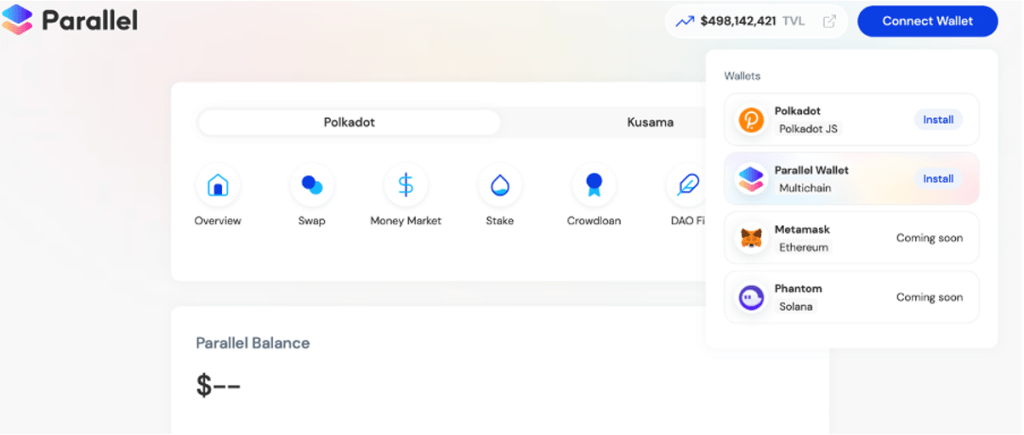
Now on the ‘overview’ page, you’ll see your wallet’s balance on parallel and the relay chain (i.e. Polkadot Mainnet). Note that if you are using a Polkadot.js wallet, there will be an option to transfer assets from the Polkadot chain to the Parallel chain.

Kusama is a blockchain very similar to Polkadot. It acts as a kind of a test-net that allows developers and projects to test apps, parachains and blockchains before they deploy on Polkadot. If you click on the Kusama tab, you’ll actually be directed to Heiko Finance, Parallel’s sister protocol that operates on Kusama. For this tutorial, we’re going to solely focus on Parallel.
Swapping
Parallel Finance has its own swap that allows users to exchange between the following tokens: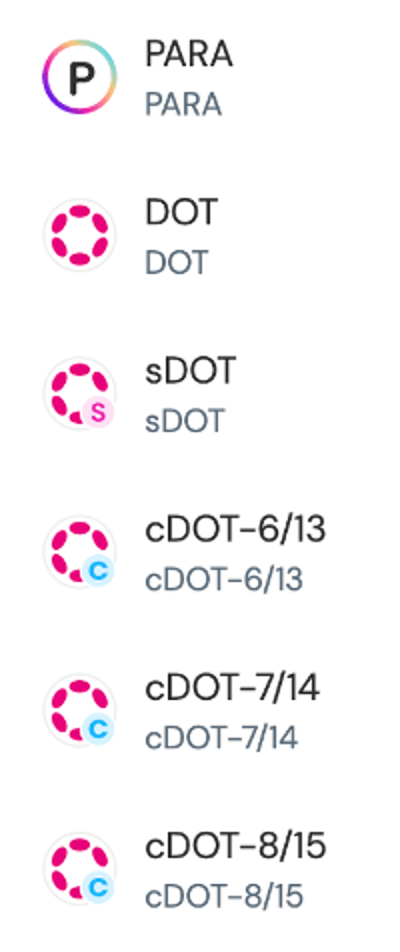
Start by clicking on the ‘swap’ icon on the main overview/home page.
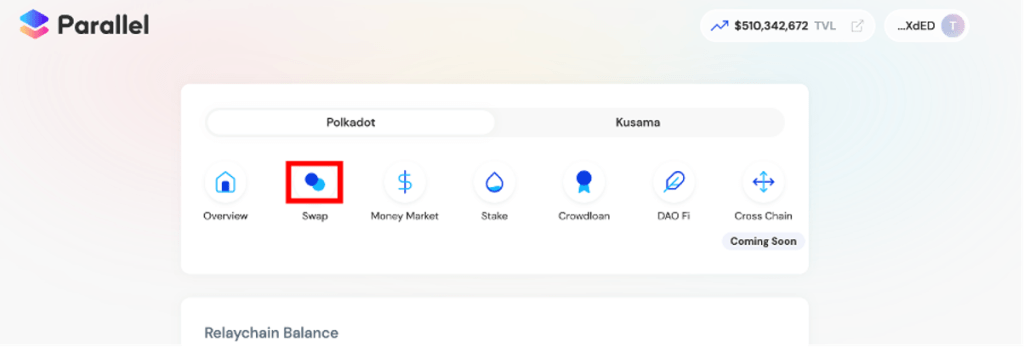
On the following screen, choose the token you want to swap and the one you want to swap into. Once you enter the amount of the token you want to swap, the corresponding amount of the token you can expect to receive will be displayed.
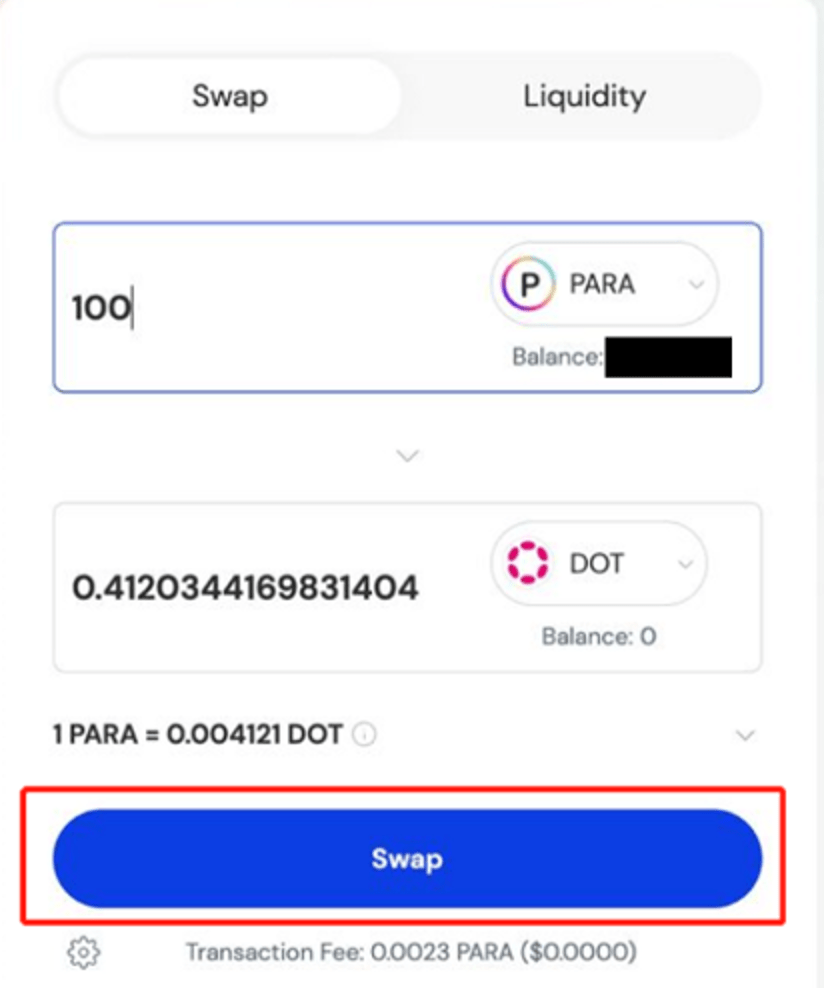
Below this, you’ll also have the current exchange rate (i.e., the price of the swap). You can click on the arrow next to the exchange rate to view more details of the transaction, including the minimum amount of tokens you can expect to receive, the LP or trading fee and the slippage tolerance.

The price of the swap is subject to change from the time you are quoted to the time that the transaction is actually processed; the ‘slippage’ value represents the percentage price difference you are ok with. The slippage tolerance for your swap will be specified by default, which is generally what most people stick with. However, if you want to adjust this percentage, you can click on the settings gear icon towards the bottom of the screen.

Providing liquidity
An important risk to consider when supplying liquidity is impermanent loss. This is a phenomenon where you, as a liquidity provider (LP), can end up with less value than what could have been realised by simply holding onto your assets (e.g. in a crypto wallet).It’s essential to have a good understanding of impermanent loss before you provide liquidity to a pool. Therefore, before continuing with this tutorial, we highly recommend reading our pro article, which provides a more detailed explanation and practical example of impermanent loss.
Begin by clicking on the swap icon on the overview/home page followed by the ‘liquidity’ tab.
 Next, choose the pair of tokens that you would like to supply. Note that as an LP, you’re required to provide trading pairs in a set ratio. Therefore, when you enter the amount of one token you want to supply, the corresponding amount of the other token you will need to supply will be displayed.
Next, choose the pair of tokens that you would like to supply. Note that as an LP, you’re required to provide trading pairs in a set ratio. Therefore, when you enter the amount of one token you want to supply, the corresponding amount of the other token you will need to supply will be displayed.
As always, it’s really important that you do your own research into the different types of pools available. You can check out Parallel Finance’s analytics page for more information (including current APYs for each pool).
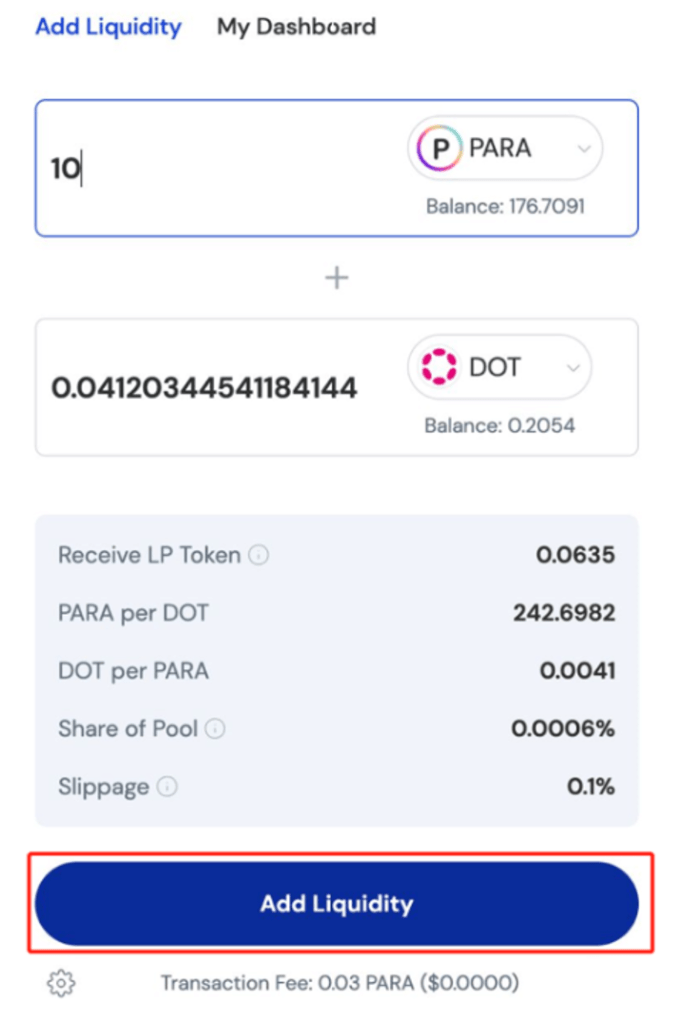
You should now be able to see more details of the transaction, including the amount of ‘liquidity pool’ tokens you’ll receive (representing your share of the pool) and your percentage contribution to the pool. Same as when using the swap, you can click on the settings gear icon to modify the slippage tolerance.
Click ‘add liquidity’ to finalise the transaction. You’ll also need to confirm this transaction in your wallet. Your liquidity position will soon begin to accrue interest and should be visible in the ‘my dashboard’ tab.
Note: users who provide DOT liquidity can deposit their LP tokens into Parallel’s Money Markets to earn additional yield, which we’ll cover in a separate tutorial.
Managing your position
The dashboard tab is also where you can modify your liquidity position. Click ‘manage’ to view more details of your position.
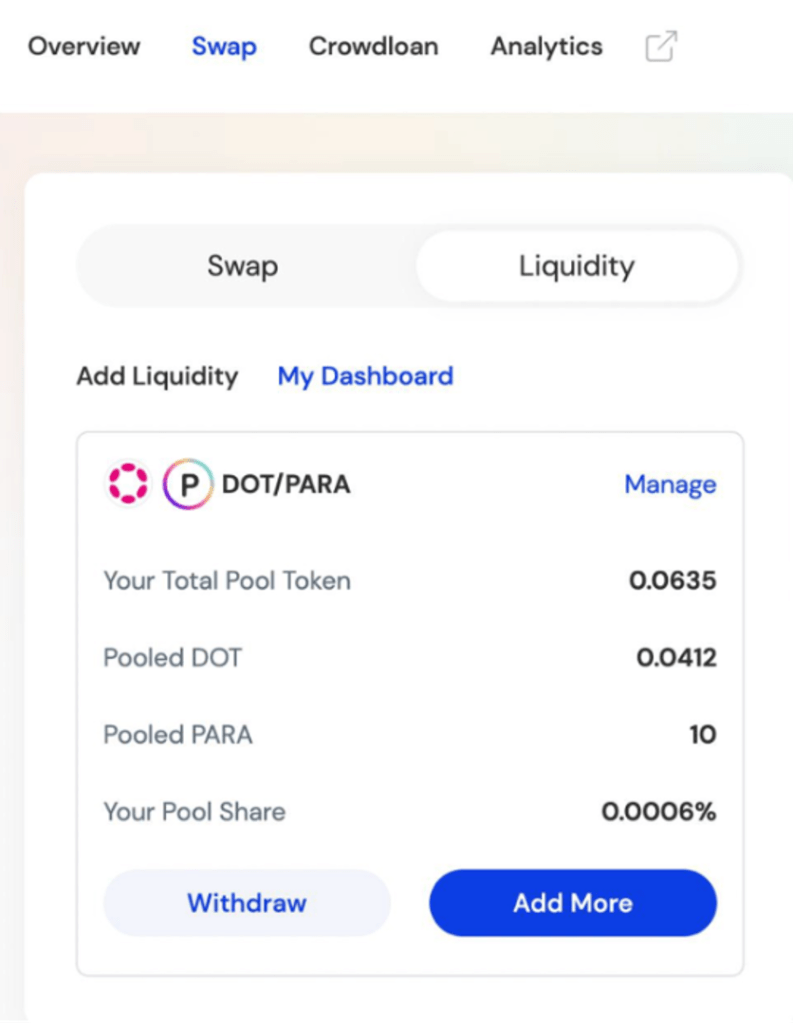
To provide more liquidity, simply click on the ‘add more’ button and specify the amount you would like to add. To remove liquidity, click ‘withdraw.’ On the following screen, you’ll need to specify an amount, as shown below.

Simply click the withdraw button again and confirm the transaction in your wallet. The tokens should appear in your wallet shortly.
Liquid Staking
The typical staking process involves users being rewarded with a percentage of tokens in exchange for locking up their tokens for a period of time. Because these tokens are 'locked', they cannot be used to take part in additional yield-generating activities (e.g. providing liquidity).Parallel finance does things a little differently by offering liquid staking. When users stake DOT, they receive sDOT (a derivative token) in proportion to their stake. sDOT acts as a receipt of contribution but also enables stakers to stay liquid and access the underlying DOT liquidity. For example, on Parallel Finance, users can lend their sDOT to the Money Market to earn yield or use it as collateral to borrow another asset (covered in a separate tutorial).
Start by clicking on the stake icon on the home page.

On the following page, you’ll see the current total APY you can expect to earn from staking. Note that this figure is a combination of staking rewards plus the interest that can be earned (in PARA) by lending sDOT to the Money Market.
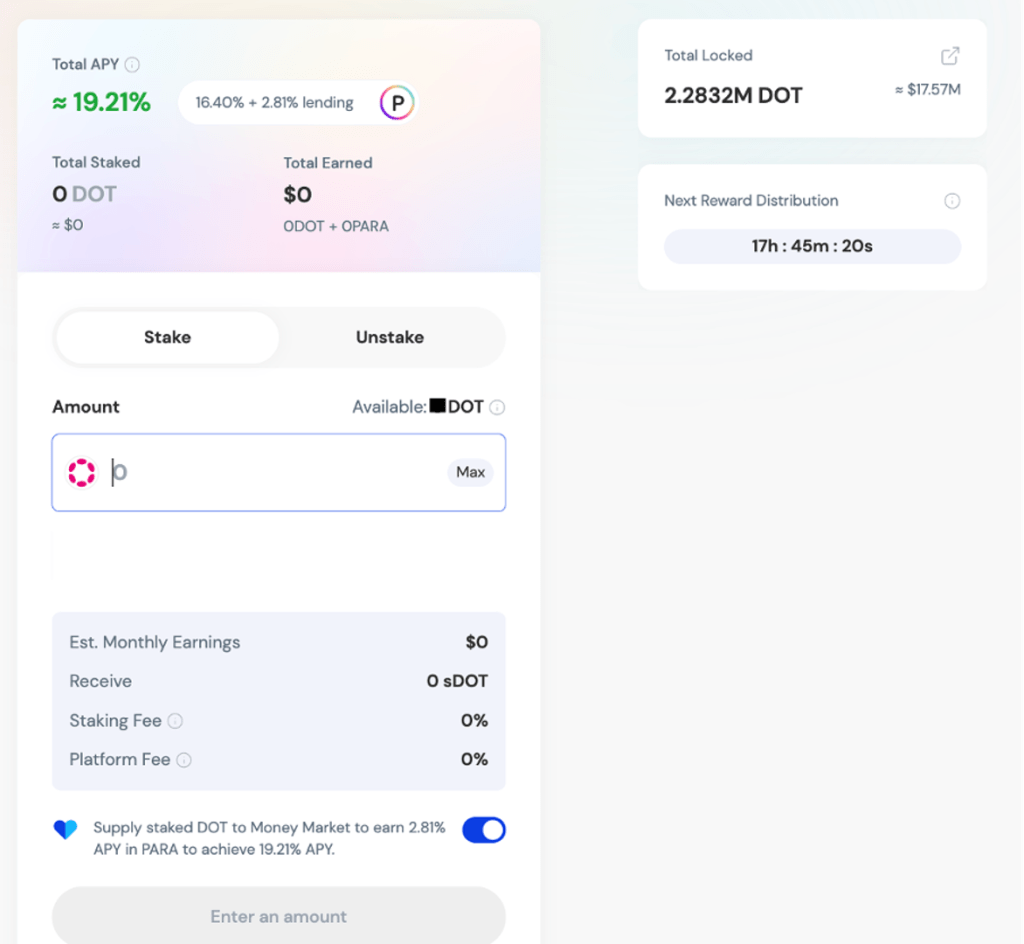
Once you enter in the amount of DOT you’d like to stake, you’ll get a breakdown of the estimated monthly earnings you can expect from staking, the amount of sDOT you’ll receive as well as the staking and platform fees. Parallel Finance uses algorithmic staking. This means that instead of choosing a validator you’d like to stake with, the protocol selects the validator(s) that it deems to be the most reliable.
Towards the bottom of the screen, you’ll notice that the ‘supply staked DOT (sDOT) to Money Market’ is enabled by default. You can simply toggle the switch button to disable this feature if you’d like. Once you click ‘stake’, you’ll be prompted to sign the transaction in your wallet.
Your position should now be visible when you navigate back to the staking page.
The staking pool compounds rewards automatically and, as already mentioned, sDOT represents your share of the pool. Therefore as this pool accumulates rewards over time, the amount of DOT you can withdraw with your sDOT will increase.
Unstaking
To withdraw your stake, click on the ‘unstake’ tab on the staking page.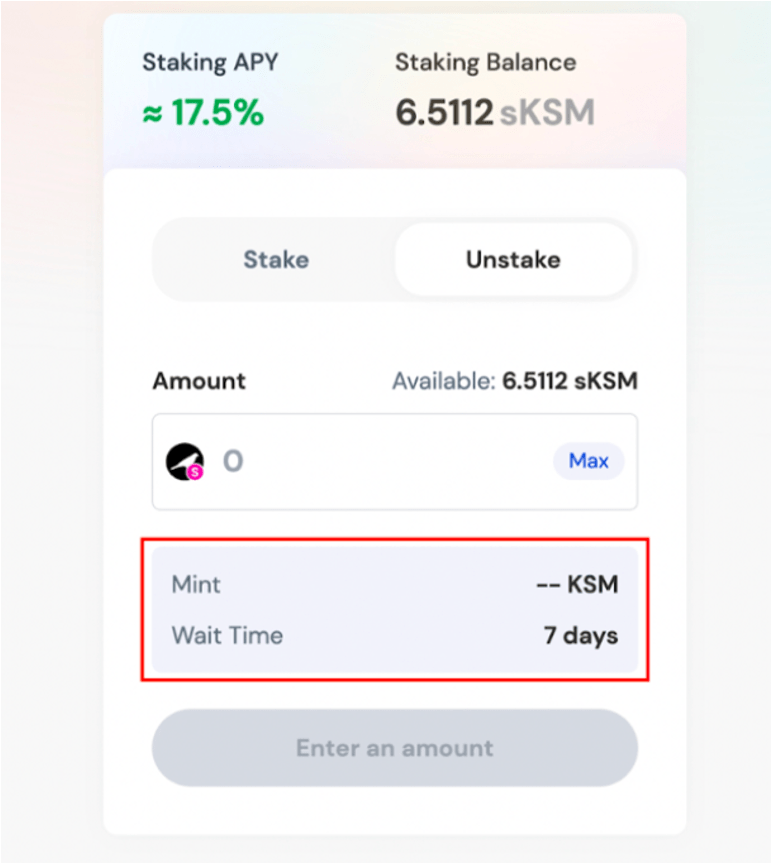
Below this, you’ll see the wait time/time it takes for your withdrawal to be processed (currently 29 days). If you don’t want to wait this long, you can enable the ‘instant unstake’ feature, which allows you to withdraw your funds almost immediately for a fee.
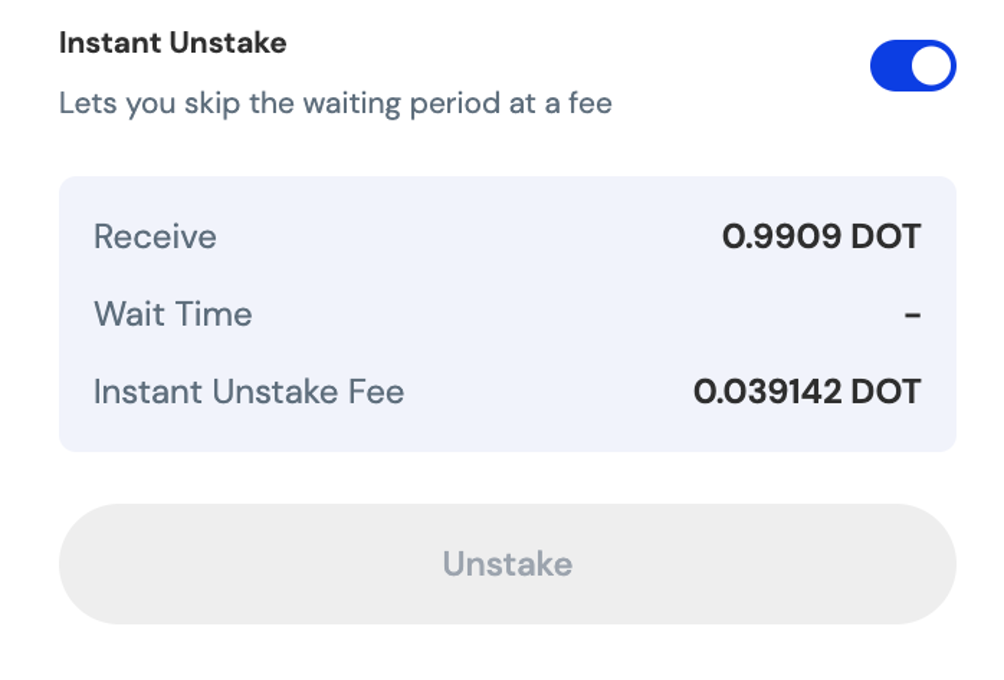
Once you click ‘unstake,’ you’ll be prompted to confirm the transaction.
Disclaimer: THIS IS NOT FINANCIAL OR INVESTMENT ADVICE. Only you are responsible for any capital-related decisions you make and only you are accountable for the results.
Comment and share if you found this tutorial useful! Also let us know what tutorials you’d like to see next.
Continue reading by joining Cryptonary Pro
$997/year
Get everything you need to actively manage your portfolio and stay ahead. Ideal for investors seeking regular guidance and access to tools that help make informed decisions.
For your security, all orders are processed on a secured server.
As a Cryptonary Pro subscriber, you also get:
Success Guarantee, if we don’t outperform the market, you get 100% back, no questions asked
24/7 access to experts with 50+ years’ experience
All of our top token picks for 2025
Our latest memecoins pick with 50X potential
On hand technical analysis on any token of your choice
Weekly livestreams & ask us anything with the team
Daily insights on Macro, Mechanics, and On-chain
Curated list of top upcoming airdrops (free money)
100% Success Money Back Guarantee
If our approach doesn’t outperform the overall crypto market during your subscription, we’ll give you a full refund of your membership. No questions asked. For quarterly and monthly subscribers this is applicable once your subscription runs for 6 consecutive months.
Our track record speaks for itself
With over 2.4M tokens and widespread misinformation in crypto, we cut through the noise and consistently find winning assets.
Our track record speaks for itself
With over 2.4M tokens and widespread misinformation in crypto, we cut
through the noise and consistently find winning assets.
Frequently Asked Questions
Can I trust Cryptonary's calls?
Yes. We've consistently identified winners across multiple cycles. Bitcoin under $1,000, Ethereum under $70, Solana under $10, WIF from $0.003 to $5, PopCat from $0.004 to $2, SPX blasting past $1.70, and our latest pick has already 200X'd since June 2025. Everything is timestamped and public record.
Do I need to be an experienced trader or investor to benefit?
No. When we founded Cryptonary in 2017 the market was new to everyone. We intentionally created content that was easy to understand and actionable. That foundational principle is the crux of Cryptonary. Taking complex ideas and opportunities and presenting them in a way a 10 year old could understand.
What makes Cryptonary different from free crypto content on YouTube or Twitter?
Signal vs noise. We filter out 99.9% of garbage projects, provide data backed analysis, and have a proven track record of finding winners. Not to mention since Cryptonary's inception in 2017 we have never taken investment, sponsorship or partnership. Compare this to pretty much everyone else, no track record, and a long list of partnerships that cloud judgements.
Why is there no trial or refund policy?
We share highly sensitive, time-critical research. Once it's out, it can't be "returned." That's why membership is annual only. Crypto success takes time and commitment. If someone is not willing to invest 12 months into their future, there is no place for them at Cryptonary.
Do I get direct access to the Cryptonary team?
Yes. You will have 24/7 to the team that bought you BTC at $1,000, ETH at $70, and SOL at $10. Through our community chats, live Q&As, and member only channels, you can ask questions and interact directly with the team. Our team has over 50 years of combined experience which you can tap into every single day.
How often is content updated?
Daily. We provide real-time updates, weekly reports, emergency alerts, and live Q&As when the markets move fast. In crypto, the market moves fast, in Cryptonary, we move faster.
How does the success guarantee work?
If our approach to the market doesn’t beat the overall crypto market during your subscription, we’ll give you a full refund of your membership fee. No questions asked. For quarterly and monthly subscribers this is applicable once your subscription runs for 6 consecutive months.
















